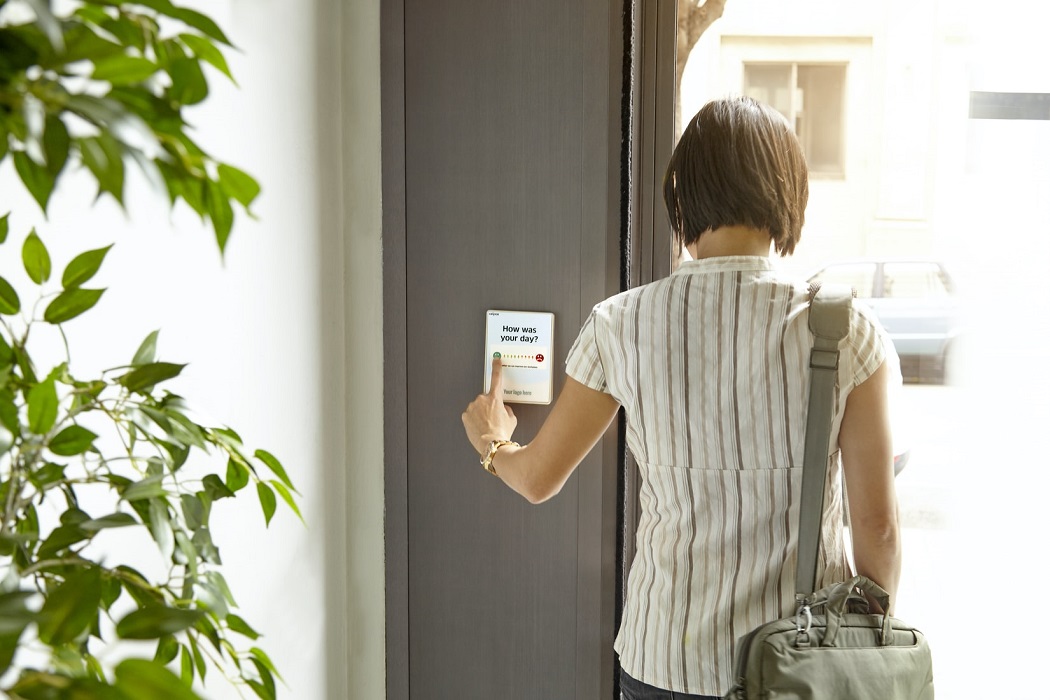Which customer review gathering channels to choose?
by Sebastien Neveu on 8 December 2022

Today, customer reviews are everywhere: on e-commerce sites' product sheets, Google MyBusiness pages, specialized sites and platforms, and social networks...
And this is only the tip of the iceberg.
Because customer reviews are also, internally in companies, the engine of customer experience and satisfaction strategies and actions, the brands mobilize them to animate their field teams.
The question is no longer whether you should collect customer reviews but how to manage them.
Today, there is a multitude of channels for collecting customer feedback. However, choosing the most appropriate ways to collect customer feedback can take time, especially with increasingly solicited customers.
Which channels are suitable for your brand? How do you balance the quantity of feedback collected and the quality of the input?
In this article, we present 11 channels to consider for your business.
111 channels to collect customer feedbacks
L'email
Email is one of the most traditional ways to collect customer feedback. It has many advantages:
- The channel is almost free
- It offers a personalized and qualitative solicitation experience
- It allows gaining customer knowledge thanks to more complete questionnaires
Email offers very satisfactory response rates (from 5 to 50%, depending on the system) even if returns depend on the subject and content of the message. However, beware of over-solicitation. Internet users receive many company messages and may be tempted to use spam filters.
Le SMS
SMS is an ideal channel to collect hot customer feedback following an experience. You can use it in two ways:
- By integrating a link to a satisfaction questionnaire into the message
- As a conversational SMS, asking questions directly in the message
The reception and opening rates for this channel are around 97%. However, it is more expensive than email for a lower return rate.
Web pop-ins
Web pop-ins are boxes that appear above the content of a web page to reveal an integrated questionnaire.
The purpose is to get feedback about the online experience. This channel helps collect customer feedback on elements of your website and the reasons for visitors' digital actions.
However, it should be used sparingly because Internet users find these pop-ins intrusive if they are too frequent. Moreover, some browser extensions can block them.
Web buttons
Web buttons are also about the online experience. They allow visitors to an e-commerce site to give a non-oriented opinion on a specific page or section of the page.
The feedback obtained through this channel is mainly addressed to UX teams, who integrate them to improve the browsing experience and conversions of the site.
SMS pull
The SMS pull or conversational SMS consists in inviting a customer or a visitor to share his feedback by SMS. It usually takes the form of an in-store display.
It is a way to reinforce the proximity between consumers and the store. In addition, conversational SMS has another advantage: it allows the inclusion of non-buyers.
Tablets
The self-service touchscreen tablet is the ideal device for places where people pass by frequently; customers are in a hurry and are unlikely to be registered in a database.
They allow you to collect opinions on the spot. However, their operation favours the number of feedback rather than the fineness of the collected data.
QR code
We thought it was moribund. It made its comeback with the health crisis. The QR code can be integrated into any medium (display, receipt, etc.).
It is an alternative to touch tablets.
Interactive Voice Response (IVR)
The IVR (Interactive Voice Response) allows for the collection of the opinion of customers without cell phones or email addresses and proposes polls and surveys randomly to a large audience.
However, consumers often do not appreciate the robotic and impersonal side of the channel.
The Wifi portal
In exchange for free access to your wifi hotspot and before being switched to your personalized platform, a pop-up or a web page invites your customers to comment on their experience with your brand.
Public customer review platforms
Google My Business, TripAdvisor... public customer review platforms are now an almost automatic step when consumers inquire about a company or hesitate between several solutions.
Of course, these are third-party platforms which you cannot control. In principle, consumers post spontaneous reviews. Negative reviews are over-represented, and false or non-compliant reviews can appear.
Nevertheless, public customer reviews are an excellent source for collecting reviews, already by the number of reviews published. Moreover, whether you like it or not, they affect your e-reputation; therefore, you cannot ignore them.
Finally, you can restore a more representative rating by encouraging all your customers to share a Google review.
Messaging applications
Some brands or providers present messaging applications (Google Messages, Messenger or WhatsApp) as a new customer relationship channel.
Used in push mode, these applications would allow a collection of customer reviews, just like conversational SMS. However, at the moment, this type of use is more expensive than SMS for less comprehensive coverage (all smartphone owners can read SMS, but they need to be equipped with a messaging app).
This channel is mainly used in pull mode, at the consumer's initiative. As a result, it provides unstructured, low-quality and difficult-to-use feedback.
How to choose your customer feedback channels ?
Now that we have presented the primary channels for collecting customer feedback, how do you find the right mix for your company? What criteria should you take into account?
What experiences do you want to collect feedback on?
The choice of channels depends on the nature of the experiences you want to evaluate :
- In-store experience or online experience
- Overall store or store-specific feedback
- Feedback on an overall store experience or a specific point of the experience
Quantity or quality ?
Some channels, such as touch tablets, make collecting customer feedback simple and fun. They generally allow you to collect a lot of feedback. However, by nature, they are not designed to gather detailed reviews. The quantity of reviews then precedes the quality of the usable information.
If you want qualitative reviews via more complete surveys, it is better to turn to a channel like an email.
It is essential to understand that each channel has specific objectives (we will discuss this in more detail later).
While the quality and depth of the opinions collected will always take precedence over quantity (an essential step to be able to calculate satisfaction indicators - CSAT, NPS - and analyze customer feedback on the elements associated with customer satisfaction - welcome in the store, price, offer....), the volume and relevance of the data collected remain essential. With a particular volume of data, the analysis will be possible because the granularity will be nonexistent.
The cost of the channel
As mentioned above, using messaging applications to collect customer feedback is more expensive than SMS for similar usage. Therefore, the cost of the channel can be a criterion of choice.
However, many channels are inexpensive or even almost free. This is the case with email, for example. On the other hand, if you want to use a free channel, you can concentrate your review collection on public review platforms.
Finally, once the channels have been chosen, you must also consider the investment required in a platform for processing, analyzing and possibly distributing the reviews.
Rely on the complementarity of channels
Combining customer feedback channels makes your feedback process much more efficient. In addition, you can cover many areas of the customer experience, both online and in-store.
In addition, you avoid dependency effects. Imagine, for example, that customers abandon one channel for one reason or another, and you can compensate elsewhere. That's what happened with the COVID-19 barrier gestures. For obvious health reasons, customers moved away from touch tablets, allowing the QR code to come back.
Above all, a good mix of channels allows you to cross-reference data, for example, between a macro view (overall satisfaction) and a micro view (specific items). This gives you richer information to make decisions and implement action plans.
The importance of centralization
Complementarity means always having multiple channels in action. But to analyze the opinions and draw relevant and actionable information from them, the feedback must be centralized.
Therefore, as soon as you select the channels, you must keep in mind this constant search for centralization.
Indeed, we will always try to operate the different collection channels with a unique platform to :
- facilitate processing
- limit the loss of information
Choice of customer feedback channels: experience on the ground
To find out which channel mix companies use in practice, we compiled data on the systems deployed by WizVille clients with our CSM division. Here are the key points we have identified.
Three channels that stand out
In all sectors combined, the podium of channels used by our clients is as follows:
- Email, in 92% of cases, in a "push" approach (post-purchase or experience)
- The SMS channel in 18% of cases, also in a "push" approach (post-purchase or experience)
- The QR code channel in "pull" (spontaneous) in 12% of the devices.
When should email be used?
Overall, email remains the main channel to use in the vast majority of customer feedback mixes. This is because it works best in response rate, and its cost is lower than that of other channels.
When should SMS be used?
We will opt for SMS:
- if the brand operates in a less static sector, i.e. for which the consumer will have less natural interactions with a post-purchase or post-experience computer (automotive, dry cleaning, sports/fitness, health...). We will then couple emails with SMS as a fallback.
- for companies that do not collect enough emails (either because it is not the preferred mode of communication in this sector or because the clientele is older, for example, in the hearing sector)
However, it should be kept in mind that the response rate is generally lower on this channel for a higher operation cost (hence its use as a secondary channel).
When to use the QR code?
Finally, the QR code has progressed for a few months (summer of 2020), especially in the clothing or restaurant sector. With the health crisis, consumers got used to scanning QR codes on various occasions, and this channel has gradually become more democratic.
It can automatically link the physical point of sale and the collection of reviews. However, it can only be applied to some industries because people need to have the time to leave a review, to identify the QR code (most often at the checkout) and the desire to do so.
It is implemented progressively, mainly for spontaneous surveys in restaurants or stores, to collect feedback from non-listed and/or non-buying customers.
The volumes are lower than for email or SMS, but it allows us to get opinions from other customers. It also has the advantage of internalizing any negative feedback to deal with them and avoid the customers concerned going to public platforms to do so.
It is mainly used in retail, restaurants and gas stations.
Share this
Related blog posts

How do you respond to negative customer reviews?

Fake online consumer reviews : news and solutions

.png?width=9900&height=2126&name=wizville_logo_couleur_fond_blanc%20(1).png)